The Abbey of Fontevraud is an amazing piece of medieval architecture and history, located in the Loire Valley in the center of the aptly-named Fontevraud-l’Abbaye village. The Abbey was the center of a vast European power structure led by a single female Abbess for nearly 700 years, a highly unusual hierarchy.
Robert d’Arbrissel, its founder, was a gifted travelling preacher whose eloquence persuaded many to follow his religious teachings. In 1096, he spoke in the presence of Pope Urbain II in Angers, who was so impressed that he ordered him to devote all his time to preaching the gospel. Gautier de Montsoreau, a vassal of the Count of Anjou, gave to Robert a territory called Fons (fountain) Ebraldis (Evraud), named after the numerous springs in the area and a local bandit whose hideout was in the forest nearby. A small church was constructed initially, but the number of followers grew so quickly that the current Abbey was built directly over the uncompleted structure in 1101. At the same time, Robert d’Arbrissel created the “Fontevrist Order”, a religious movement that included both men and women monks housed in separate monasteries. They practiced “ora et labora” (prayer and work), poverty, chastity, silence, and obedience as preached by St Benedict.
A single female Abbess ruled over the entire structure, reporting directly to the King of France and to the Pope. D’Arbrissel saw the submission of the masculine monks to a female leader as the ultimate act of subservience to the Lord, inspired by the submission of Jesus and St John to the Virgin Mary. Confiding the leadership of not only the Abbey but the entire Fontevrist Order to a woman was a controversial move at the time, and initially, many of the male monks did not agree to submit to a woman.
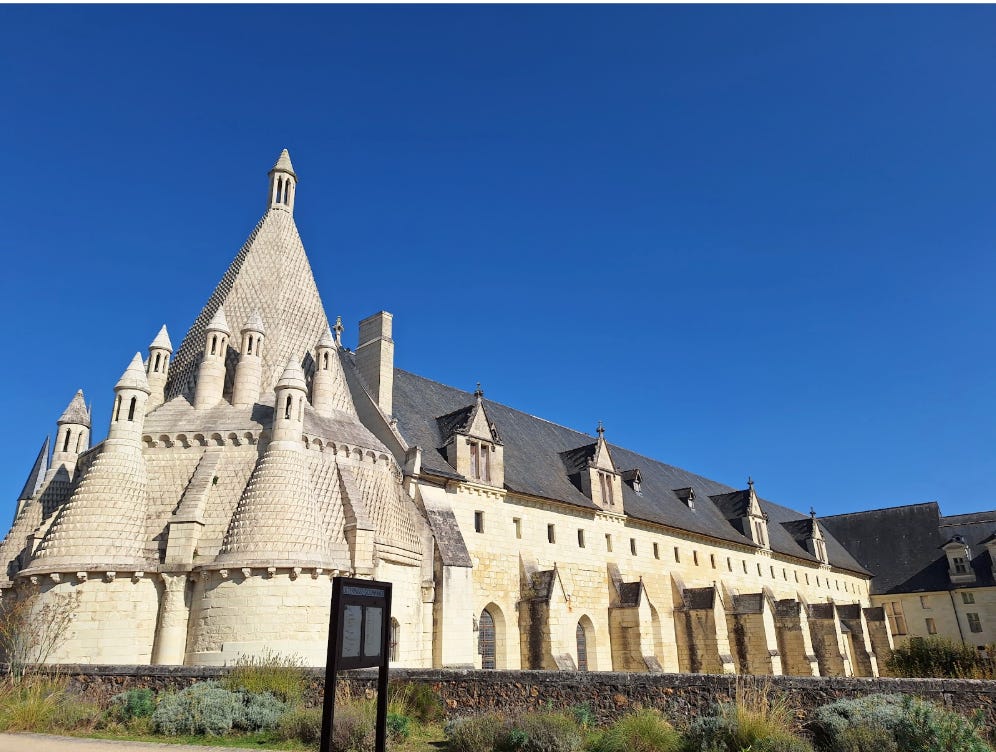
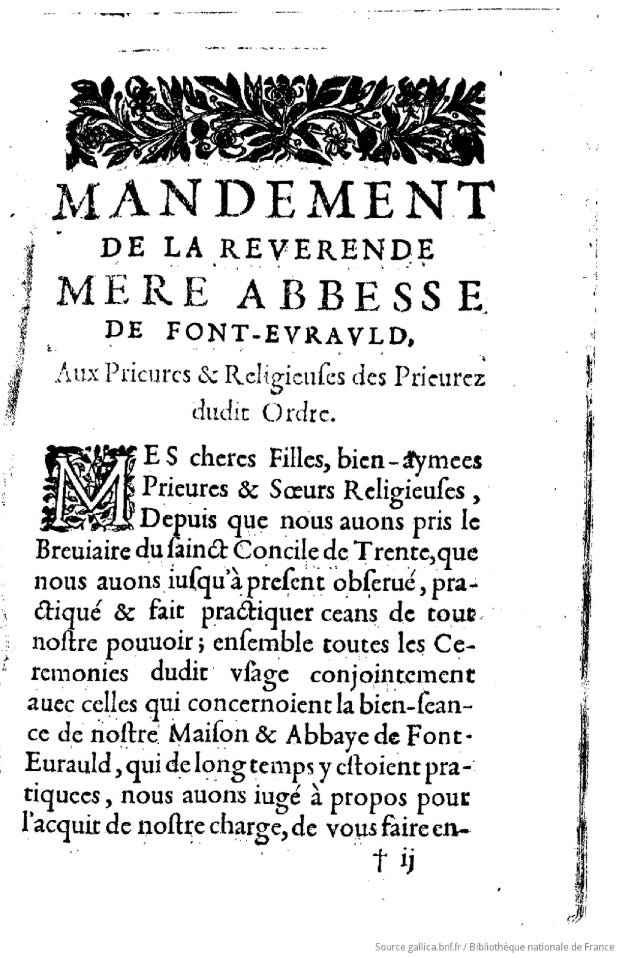
Their increasing desertions led Mathilde d’Anjou, the 2nd Abbess, to request support from Pope Anastace IV in 1154; he confirmed her leadership status and halted the desertion of the monks. At its height, Fontevraud was the biggest monastic city in Europe, with more than 700 male and female monks living inside Fontevraud Abbey in 4 separate monasteries. An additional 2000 monks housed in 70 monasteries built throughout France, Spain, and England belonged to the Fontevrist Order, all of whom reported to the Abbess of the central Abbey in Fontevraud.
Robert d’Arbrissel was very well-connected among the leading class; he had the support of Foulque V, the Count of Anjou, whose vassal granted him the land on which he built the Abbey. All of the 36 Abbesses who ruled Fontevraud Abbey from 1115 to 1792 were of noble descent.
The Abbey gained royal status in 1189 when Eleanor of Aquitaine (“Aliénor d’Aquitaine” in French) decided to bury her husband, King Henry II Plantagenet, on the Abbey grounds. Her decision was both a political and a practical one: Fontevraud was located in the center of the Plantagenet’s vast kingdom that extended for 50 years from the Pyrénées mountains bordering Spain to the southern border of Scotland, and Henry died in nearby Chinon in the heat of summer, too far away for his body to be transported to his preferred burial site in Grandmont in the Limousin region.
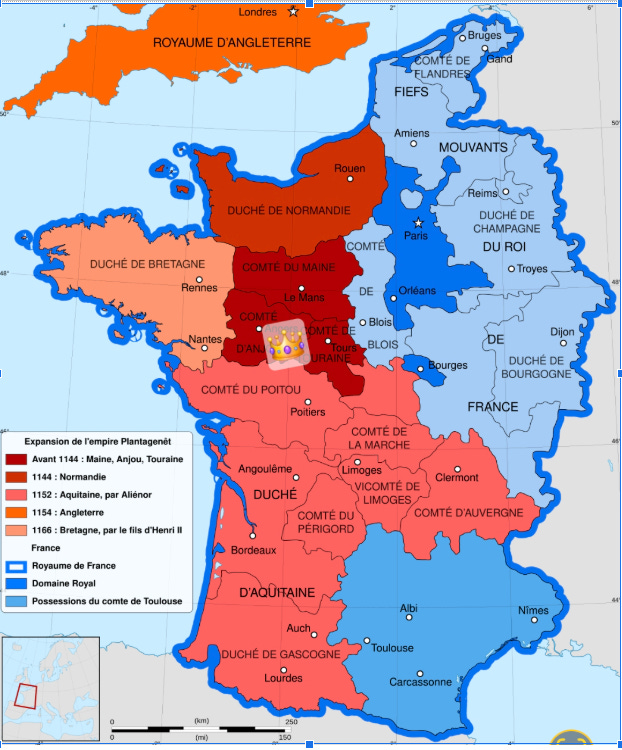
The recumbent effigies (“gisants” in French) of Eleanor of Aquitaine, her husband King Henry II Plantagenet, and her son Richard the Lionheart were all designed by Eleanor herself and are still visible in the Abbey cathedral. Amazingly, they’re still intact given the turbulent history of the Abbey. Eleanor resided in the Abbey during the last 5 years of her life and was buried there beside her husband after she died in 1204. Thus, Fontevraud became the royal burial ground of the Plantagenets.
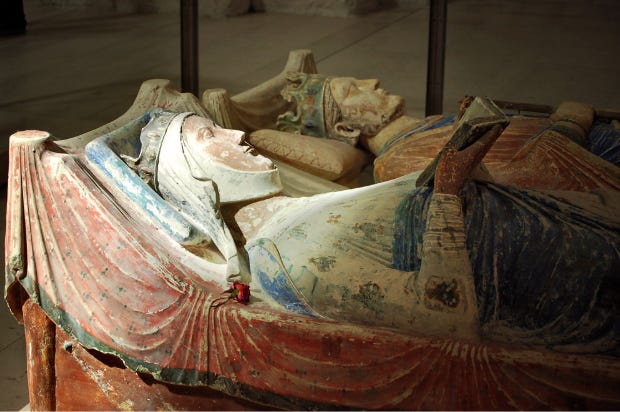
Recumbent effigies (“gisants” in French) of Eleanor of Aquitaine and her husband, King Henry II Plantagenet, in Fontevraud Abbey. credit: Wikipedia
The prestige and royal status of the Abbey drew many noble families and descendants of royalty to educate their children there, including Eleanor of Aquitaine’s own children and King Louis XV’s four youngest daughters. Of the 36 Abbesses who ruled Fontevraud, five were relatives of the royal Bourbon family; these five royal Abbesses ruled in succession over the Abbey for 150 years. Among them was Renée de Bourbon, the 27th Abbess, who was a direct descendant of Saint Louis IX, King of France.
The 33rd Abbess, Marie-Madeleine Gabrielle Adélaïde de Rochechouart, sister of the famed mistress of King Louis IV, Madame de Montespan, was appointed when she was 25 years old, following the last Abbess of Bourbon descent, Jeanne de Bourbon. The King of France called her “the pearl of the Abbesses” because of her intellect and wit. She invited many writers and philosophers to the Abbey during her reign.
Julie-Sophie-Gillette de Gondrin de Pardaillan d’Antin (known as “Julie d’Antin”), the last reigning Abbess, had entered the Abbey at the age of 3 and remained there her entire life until French revolutionaries ransacked Fontevraud in 1792. She escaped from the Abbey disguised as a peasant woman.
Julie d’Antin, the last Abbess. credit: Wikipedia
In 1804, Napoléon ordered the conversion of the Abbey into a prison; it opened in 1814, housing up to 2800 prisoners until its shutdown in 1963, with a reputation among French criminals as one of the harshest prisons in the country. An exhibit in one of the former prison buildings tells the story of this darker portion of the Abbey’s history, including the memories of writer Jean Genet, who was imprisoned there during his turbulent youth.
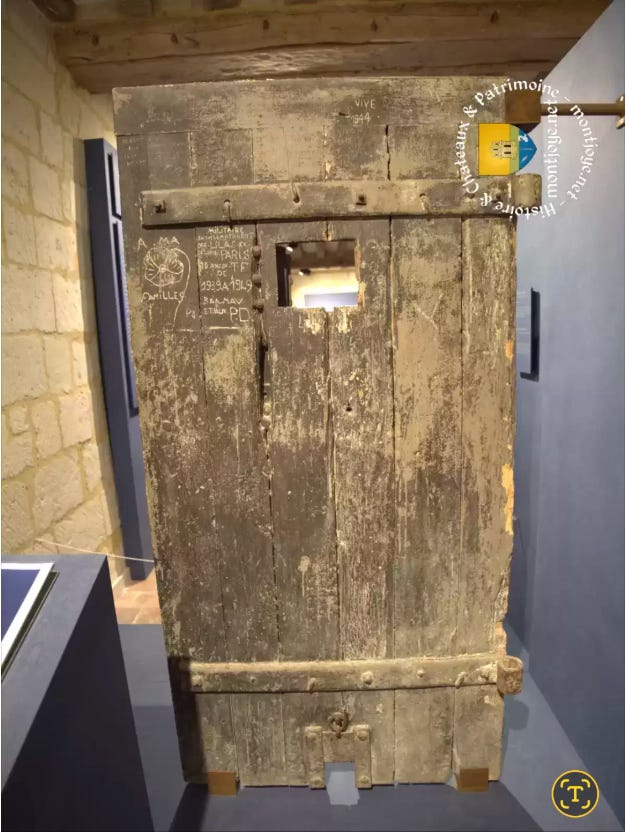
Renovation of portions of the Abbey had begun in 1840, but it was not opened to the public until 1985. A modern art museum was opened in 2021, and there are continuous contemporary artist residencies on-site. A current art project nearing completion is the recreation of the Abbey bells. The initial bells, six in all, were melted down during the French Revolution. For the past 6 years, a single bell was commissioned each year to an artist who chose a theme representing one of the historical figures of the Abbey. The bells are currently on display on the Abbey grounds.
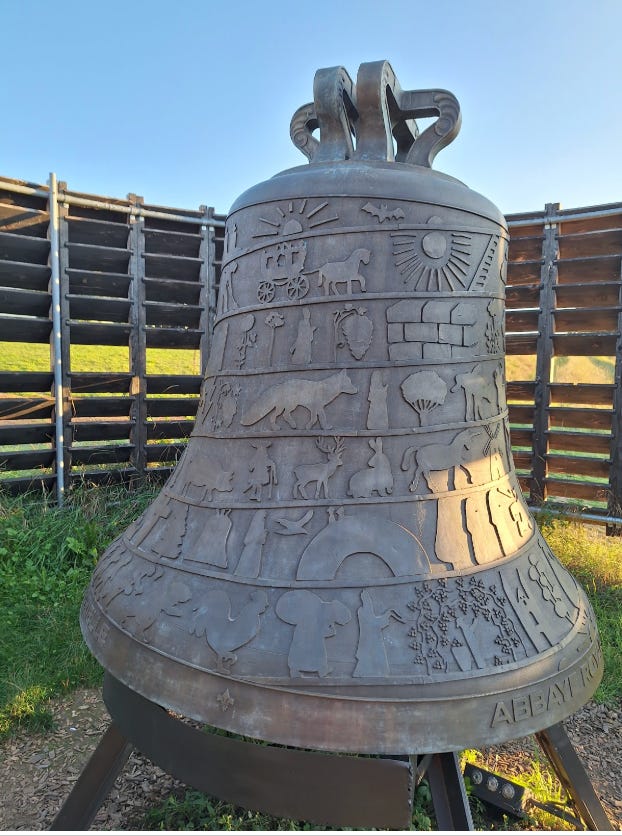
Step through the large double doors of Fontevraud Abbey and enter another world…a town-within-a-town spread over 16 Ha (32 acres approximately).
This article can only describe small tidbits of what it’s like to visit this amazing place. It’s very easy to spend an entire day (or 2!) exploring the buildings, history, and art. You can even spend the night in the Abbey; a hotel and a Michelin-starred restaurant have been installed in one of its priories.
Have you ever visited this historical monument? What did you enjoy most?
Introducing Contributor, Lorraine Tilbury:
Visit her Contributor Page — Explore more of Lorraine’s work


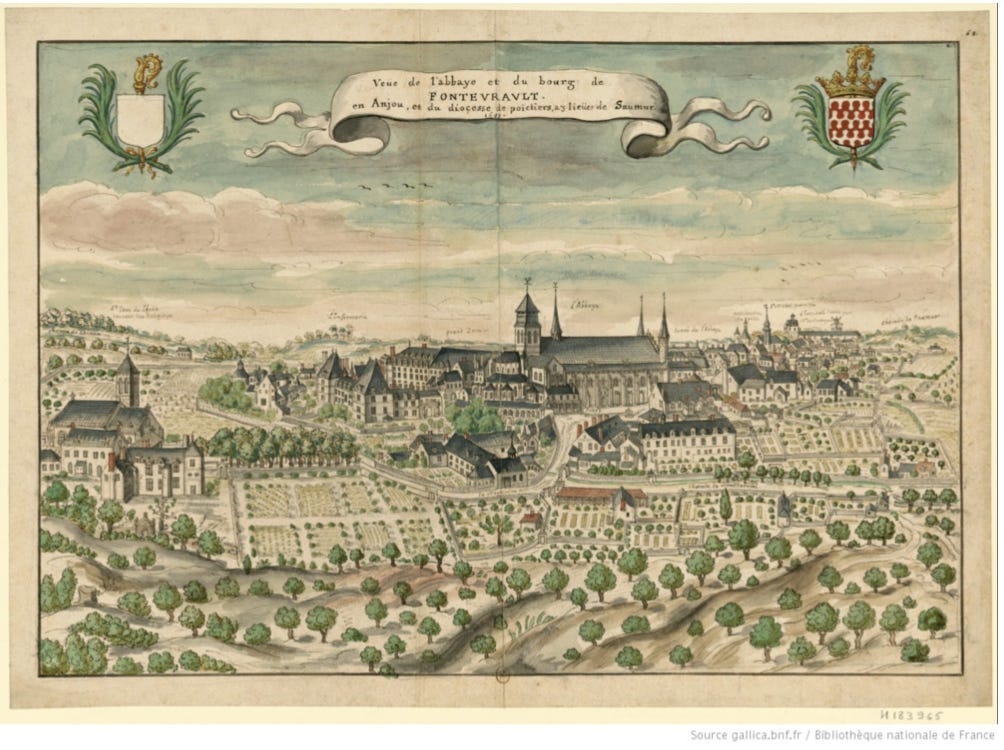
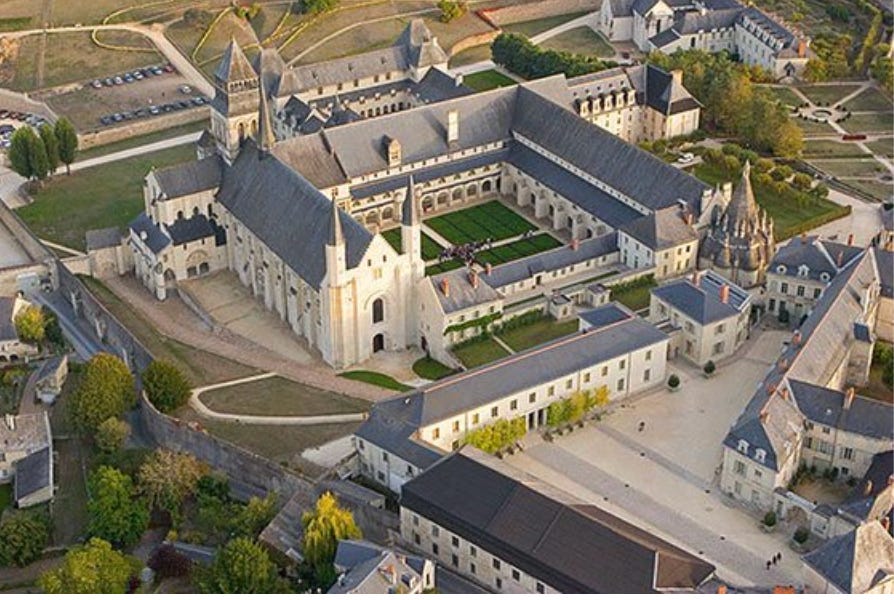
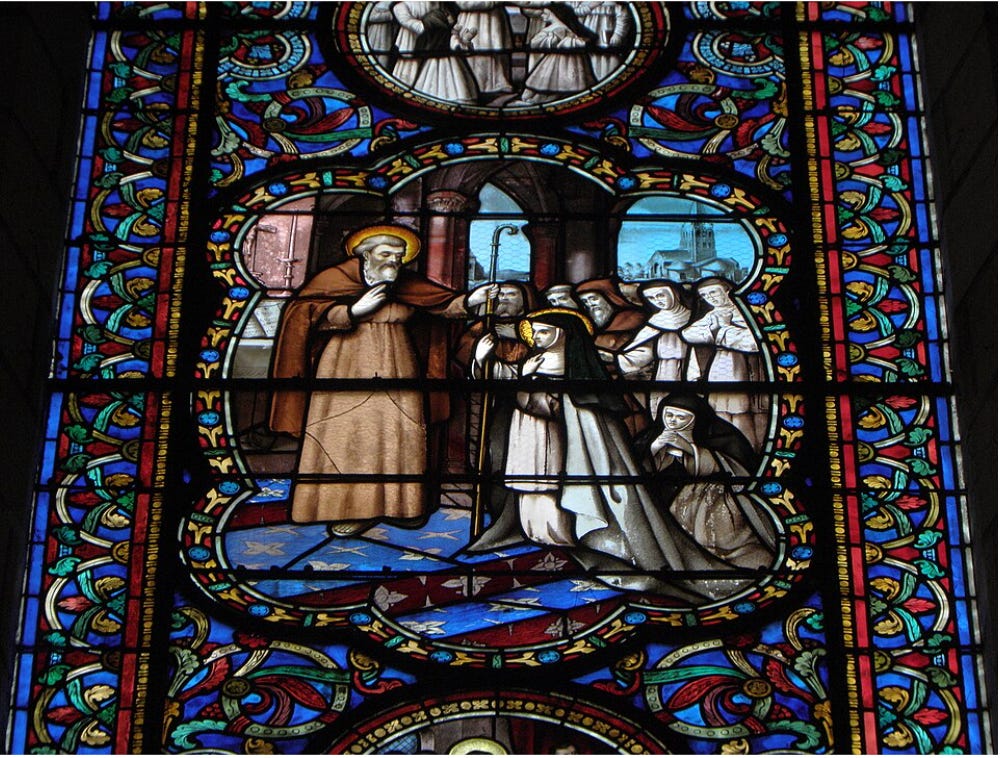
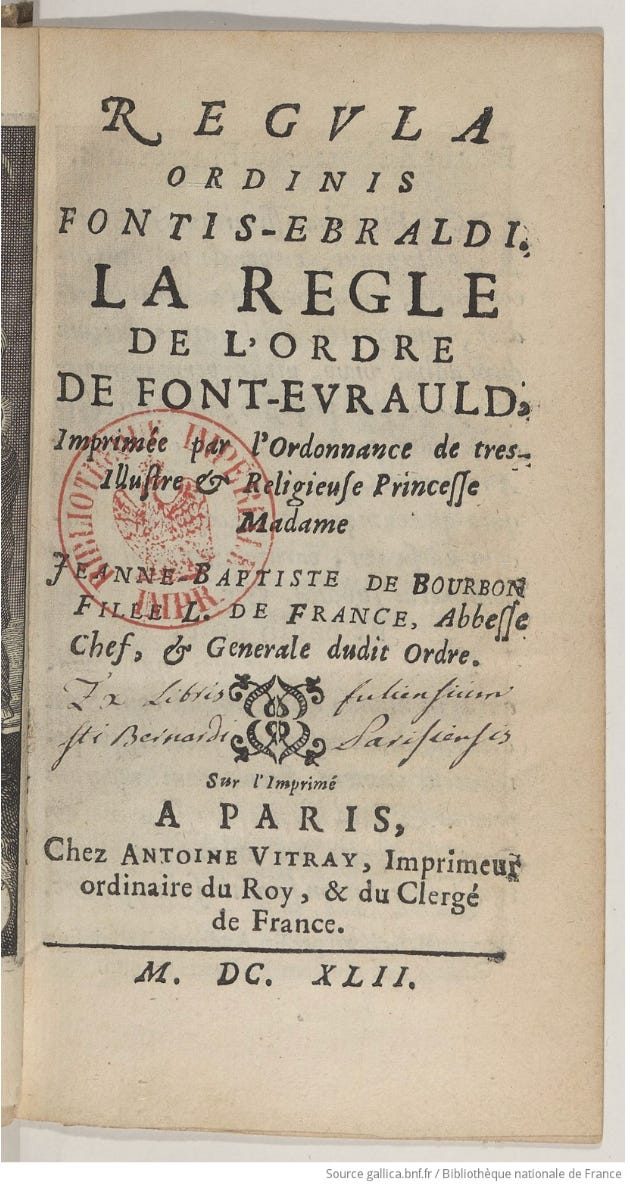
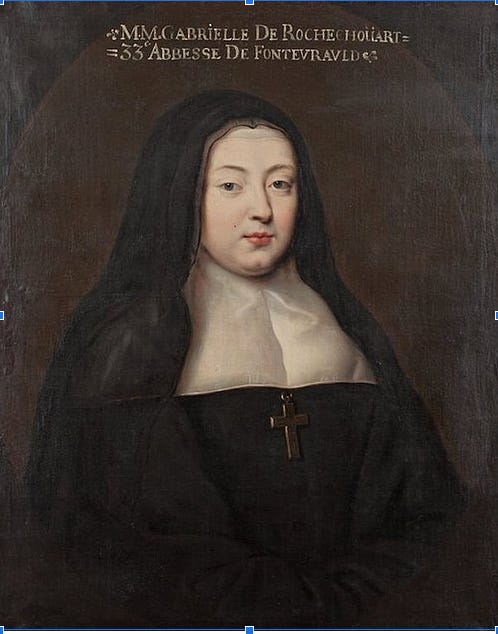
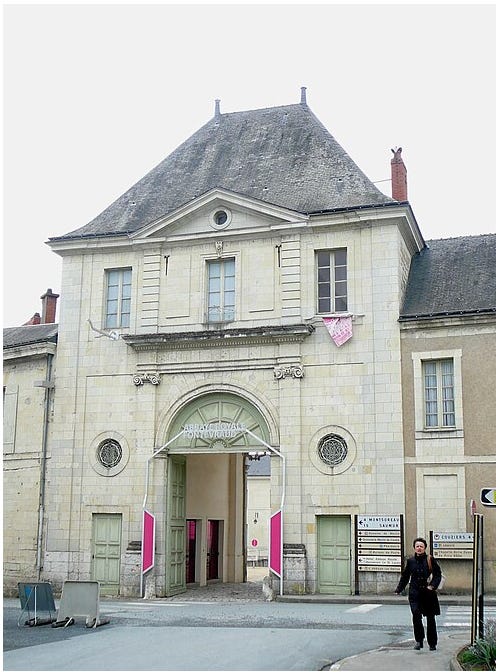
Thanks for this very informative and well written article. The Abbey is definitely worth a detour!
Such an informative and interesting article! Thank you for sharing as a first time contributor!